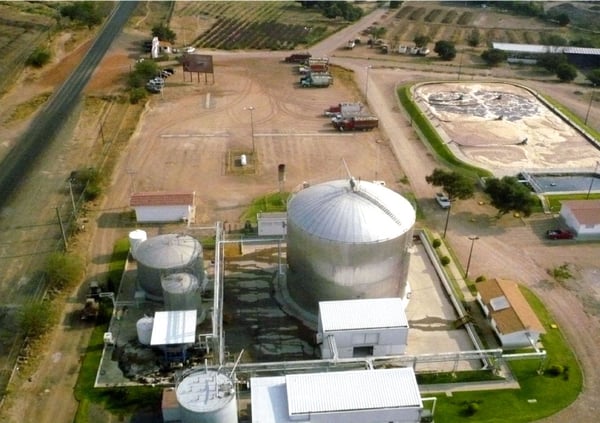
Water is without a doubt one of our scarcest resources. This may seem like a contradictory statement––water is one of the most abundant resources on Earth, covering approximately 70% of its surface. It does, however, cause us a lot of problems...find out why by reading below.
What is the problem with water in the world?
By looking at the data more closely, the issue of water scarcity can quickly become a pessimistic one. According to some numbers, the amount of water contained by this planet takes up approximately 1,400 million cubic kilometers.
Nonetheless, about 97.5% of this volume is salt water, which cannot fulfill human necessities. Only 2.5% of the Earth’s water is fresh, and 69.7% of that 2.5% is frozen in glaciers, and the remaining 30% is ground water. Only 0.3% of fresh water is found in rivers and lakes, meaning that only 0.3% of fresh water is contained in what we would call “accessible” places.
Another situation we are faced with is that water is not uniformly distributed––that is to say, there are places where the resource is extremely abundant, and places where it is so scarce that people struggle to even hydrate themselves sufficiently.
What is the problem with water in Mexico?
According to national data, we know that Mexico is a semi-dry environment, in which 65% of the country is occupied by arid and dry, sub humid areas and accounts for 50% of population settlement.
In legal terms, Mexico adheres to a Law of National Waters and its regulations, as well as other Mexican official standards, and the Federal Law of Rights, which regulates both the use of the resource, the processing of wastewater, and the cost of both activities.
What is the problem with water in the tequila industry?
On a more local scale, we can compare the water circumstances in the two regions where the most intense tequila-making processes are developed. One of these regions is on high land, where groundwater has been exploited to such a degree that the National Water Commission has declared it a closed zone. This has made it so that we cannot concede for new regulations due to the abatement of the resource.
On the other hand, water in the region of Valles is available without restrictions, because according to the National Water Commission regulations, the demand of water necessary to make tequila is less than the availability.
The availability of water is not the only problem for our industry––we also face numerous challenges trying to counteract the indiscriminate contamination of water due to dumping of wastewaters and other harmful materials into bodies of surface and groundwater. This illegal dumping permits contaminants to reach the water table, further aggravating the situation.
Though the total amount of water on Earth does not change with time, changes in quality that can severely affect the amount of water we ultimately have to satisfy our necessities.
How many liters of water are necessary to make 1 liter of tequila?
In the tequila industry, water is one of the main inputs. It is necessary in an approximate proportion of 15 liters of water to produce 1 liter of tequila. With this information, we can infer that the industry is highly dependent on the availability of this resource.
Two of the basic water-pollution parameters indicated in NOM-001-SEMARNAT-1996, which regulates the quality of wastewater discharged into federal bodies of water, are: biochemical oxygen demand and the second being total suspended solids. Biochemical oxygen demand, also known as DBO5, is an estimation of the oxygen content required for a heterogeneous microbial population to oxidize organic matter from a water sample in a period of 5 days. Total suspended solids, or SST, is the material that settled solids, suspended solids and colloidal solids consist of. These solids are retained by a glass filter with a 1.5 µm pore size, dried and kept at a constant 105°C ± 2°C temperature. We can use DBO5 and SST regulations to make a comparison regarding the minimum conditions for discharged waste water, and the potential of contaminating residual water from the tequila factory without treating it, we find the following:
When wastewater from the tequila industry is left untreated, it may contain 32,000 milligrams or more oxygen content per liter discharged. The regulation put forth by DBO5 sets a maximum of 150 milligrams per liter discharged.
When wastewater from the tequila industry is left untreated, it may contain 8,000 milligrams or more material per liter discharged. The regulation put forth by SST sets a maximum of 150 milligrams per liter discharged.

*Photo: Water treatment plan at Casa Sauza.
Considering all of this, we can infer that the amount of contaminants contained in untreated wastewater produced by the tequila industry is very high, as well as the amount of water used, and irresponsible conduct in the tequila industry has a significant negative effect on the environment.
If you’d like to know what Casa Sauza is doing to optimize their use of water and simultaneously prevent contamination, which has classified us as a sustainable industry, I invite you to read my future blogs.
Come and visit Casa Sauza and see for yourself how the modernization of our production processes delivers the purest tequila that you will find in the market.
.png?width=50&height=50&name=10.CS-Redondo%20(1).png)
